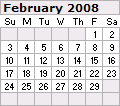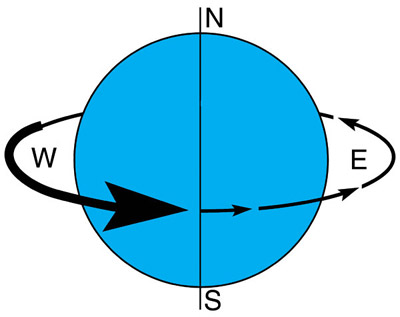 Today is Leap Day. We add this extra day in February if the year is evenly divisible by four. That’s once every four years. Right?
Today is Leap Day. We add this extra day in February if the year is evenly divisible by four. That’s once every four years. Right?
Wrong.
Our once-every-four-years addition nets out to an average of 365.25 days/year, but the time required for the Earth to revolve once about the Sun is actually 365.242374 days, thus generating an error of .007624 days/year.
To eliminate this error, we use the Gregorian calendar, so named because in 1563 at the Council of Trent,

Pope Gregory XIII adopted a more precise calendar so that Easter would always occur near the vernal equinox. Ten days had to be removed to get the vernal equinox back to March 21. It took nearly two decades to get this done (I’m guessing that Gutenberg‘s protéges—he had been dead for about 100 years—were lobbying: “But we’ve already printed next year’s calendar!”). Finally, in 1582, October 4 (Thursday), was followed immediately by October 15 (Friday), in all Catholic countries. Other countries took their time, with Great Britain and the Colonies finally agreeing 170 years later, in 1752.
The Gregorian calendar mandated another change that took care of most of the .007624 residual error: years that end in double zero would be leap years only if also evenly divisible by 400. For this reason, 1700, 1800, 1900, 2100, 2200, 2300, and 2500 are not leap years, but 2000 and 2400 are. This correction removed .0075 days/year from the error, leaving .000124, implying that once every 8,000 years we’ll have to remove a scheduled leap day.
 But maybe not. Irrespective of creationist belief in constancy, the average solar year is not constant. It is changing slowly, but unpredictably, due to numerous factors, including precession of the earth’s orbit, changes in rotational speed due to tidal forces, and whether or not everyone in China decides to jump one pace westward simultaneously…so wait a while before buying a calendar for 10,000 A.D.
But maybe not. Irrespective of creationist belief in constancy, the average solar year is not constant. It is changing slowly, but unpredictably, due to numerous factors, including precession of the earth’s orbit, changes in rotational speed due to tidal forces, and whether or not everyone in China decides to jump one pace westward simultaneously…so wait a while before buying a calendar for 10,000 A.D.





